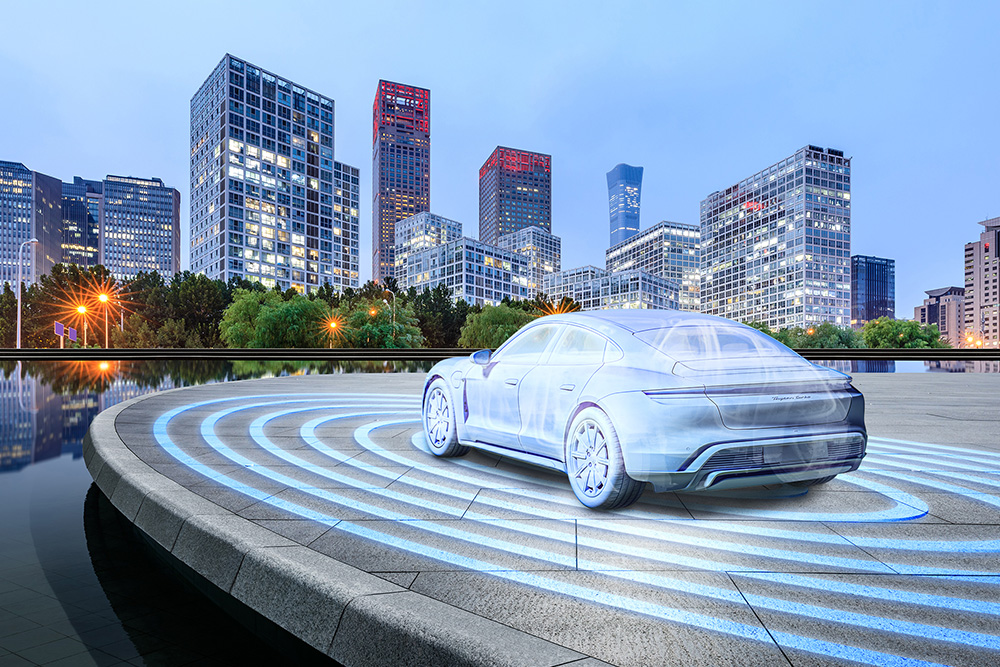BMW, Porsche, And The Evolving Chinese Automotive Landscape

Table of Contents
The Allure of Luxury: BMW and Porsche's Position in the Chinese Market
H3: BMW's Strategy in China:
BMW boasts a long-standing presence in China, establishing itself as a significant player in the Chinese luxury car market. Their success stems from a multifaceted strategy:
- Market Share Dominance: BMW consistently holds a substantial market share in the luxury segment, solidifying its position as a leader. This is achieved through a combination of strong brand recognition, a diverse model lineup, and effective marketing.
- Localization and Production: BMW has invested heavily in local production facilities, allowing for efficient manufacturing and tailored models to meet specific Chinese consumer preferences. This localized approach minimizes import costs and ensures quicker response to market demands.
- Targeted Marketing Campaigns: BMW's marketing campaigns in China are finely tuned to resonate with the target audience. They emphasize technological innovation, driving experience, and status, skillfully aligning with the aspirations of affluent Chinese consumers. Successful campaigns often incorporate local celebrities and influencers.
- Key Models: Specific models like the BMW X series and the 5 Series have achieved exceptional popularity in China due to their combination of luxury, performance, and practicality.
H3: Porsche's Approach to the Chinese Consumer:
Porsche, synonymous with high-performance and exclusive luxury, enjoys a strong brand image in China that resonates powerfully with affluent consumers. Their strategy emphasizes:
- Prestige and Brand Image: Porsche's focus is on maintaining its exclusive image, appealing to discerning buyers seeking prestige and exclusivity. This brand image is carefully cultivated through meticulous attention to detail, top-tier customer service, and highly effective marketing.
- Exclusive Dealership Network: Porsche’s network of dealerships in China is strategically located and designed to provide an unparalleled customer experience, further enhancing the brand's exclusive feel.
- Model Adaptation and Marketing: While retaining its core brand identity, Porsche adapts certain models and marketing messages to resonate with specific Chinese preferences. This involves carefully considering design elements, technological features, and cultural nuances.
The Rise of Domestic Competition and the EV Revolution
H3: Challenges from Chinese Automakers:
The emergence of powerful domestic brands like BYD, NIO, and XPeng presents a significant challenge to established luxury players like BMW and Porsche. These Chinese automakers are:
- Rapidly Gaining Market Share: These domestic brands are aggressively expanding their market share, leveraging technological innovation, competitive pricing, and a deep understanding of the local market.
- Technological Advancements: Chinese manufacturers are pushing the boundaries of electric vehicle technology, offering competitive features and performance at often lower price points than established international brands.
- Competitive Pricing Strategies: Domestic brands often adopt more aggressive pricing strategies, creating direct pressure on the pricing strategies of international luxury brands.
H3: The Electric Vehicle Transition:
China’s EV market is booming, and it’s crucial for luxury brands to adapt:
- EV Market Growth: The Chinese EV market is one of the fastest-growing globally, driven by government incentives, increasing environmental awareness, and technological advancements.
- BMW and Porsche's EV Strategies: Both BMW and Porsche are investing heavily in electric vehicles for the Chinese market, developing and releasing models specifically designed to meet the needs and preferences of Chinese EV buyers.
- Infrastructure Challenges: Despite rapid progress, challenges remain in the expansion of EV charging infrastructure, which needs to keep pace with the growth in EV adoption.
Understanding the Chinese Consumer: Preferences and Trends
H3: Evolving Consumer Preferences:
The preferences of Chinese car buyers are constantly evolving, influencing the strategies of all automakers:
- Technological Sophistication: Chinese consumers are increasingly tech-savvy, placing a high value on advanced technology features, such as infotainment systems, driver-assistance features, and connectivity options.
- Luxury and Brand Image: While price remains a factor, luxury and brand image remain extremely important, underscoring the enduring appeal of established luxury brands.
- Social Media Influence: Social media plays a critical role in shaping consumer perceptions and influencing purchase decisions, demanding innovative and engaging digital marketing strategies.
H3: Future Outlook for Luxury Car Brands:
The future of luxury car brands in China is brimming with potential, but also with challenges:
- Growth Potential: Despite intensifying competition, the long-term growth potential for luxury car brands in China remains significant due to the expanding affluent consumer base.
- Challenges and Opportunities: Navigating the evolving regulatory landscape, managing the shift to EVs, and adapting to changing consumer preferences will be critical for sustained success. This necessitates a commitment to innovation, localized strategies, and deep consumer understanding.
The Future of BMW, Porsche, and the Dynamic Chinese Automotive Landscape
In conclusion, BMW and Porsche's success in China hinges on their ability to adapt to the rapidly shifting landscape. Their strategies – encompassing localization, technological innovation, and a deep understanding of the Chinese consumer – will determine their continued dominance in this crucial market. The rise of domestic competition and the EV revolution present significant challenges, but also exciting opportunities for growth and innovation. Understanding the Chinese automotive market, analyzing the Chinese luxury car sector, and navigating the complexities of this dynamic landscape are critical for success in this pivotal automotive market. Continue exploring the evolving strategies of these iconic brands to gain deeper insights into this transformative industry.

Featured Posts
-
 I Kontra Emma Stooyn Margkaret Koyalei Sta Oskar I Analysi Vinteo Apokalyptei Ta Panta
May 04, 2025
I Kontra Emma Stooyn Margkaret Koyalei Sta Oskar I Analysi Vinteo Apokalyptei Ta Panta
May 04, 2025 -
 Severe Sentences For Cult Members Involved In Child Gambling Scheme
May 04, 2025
Severe Sentences For Cult Members Involved In Child Gambling Scheme
May 04, 2025 -
 Brasileirao Serie A Confira A Tabela Oficial Divulgada Pela Cbf
May 04, 2025
Brasileirao Serie A Confira A Tabela Oficial Divulgada Pela Cbf
May 04, 2025 -
 The Most Iconic Final Destination Moment A Definitive Ranking
May 04, 2025
The Most Iconic Final Destination Moment A Definitive Ranking
May 04, 2025 -
 Internet Buzz Over Emma Stones Unique Snl Dress The Popcorn Butt Lift Look
May 04, 2025
Internet Buzz Over Emma Stones Unique Snl Dress The Popcorn Butt Lift Look
May 04, 2025
